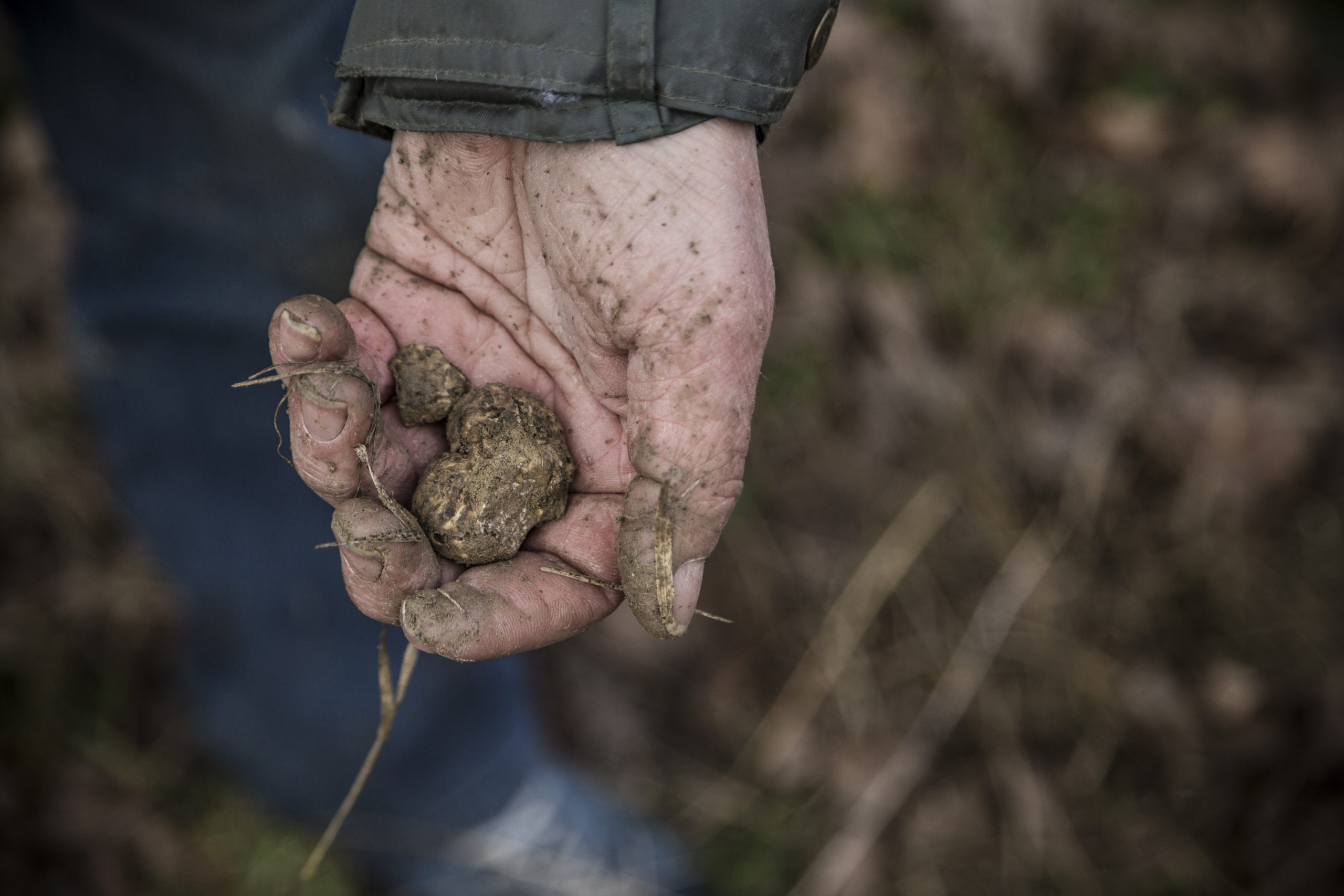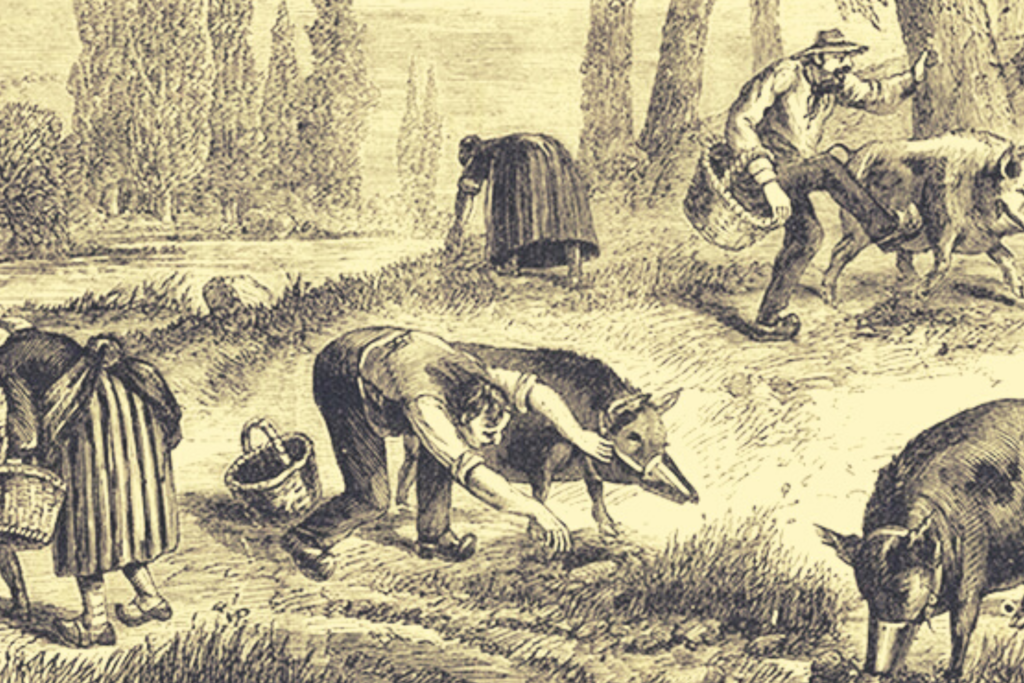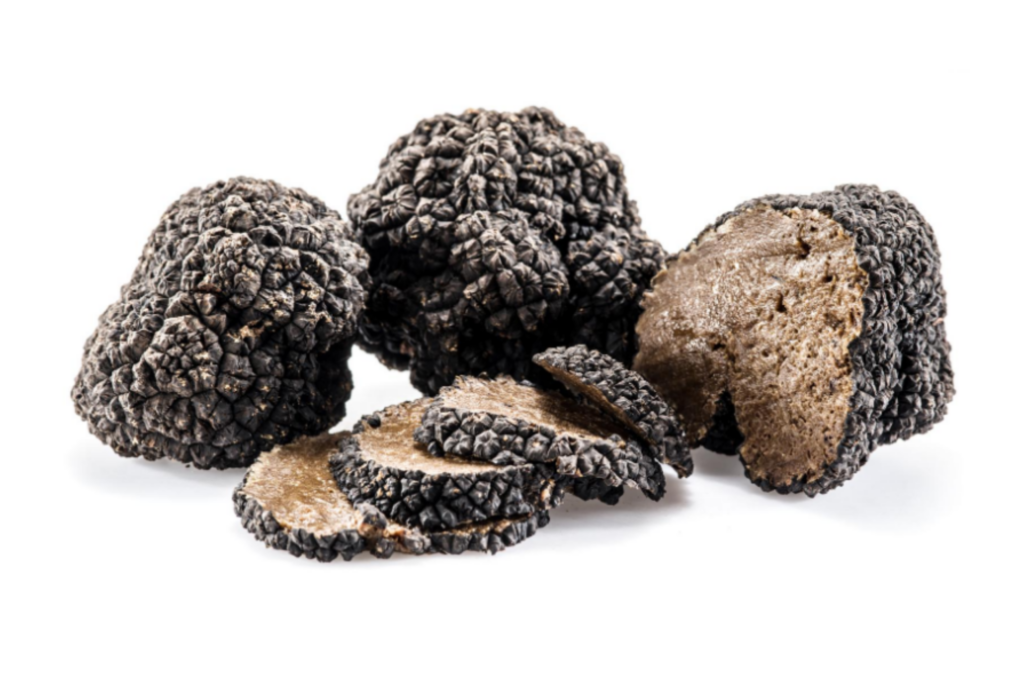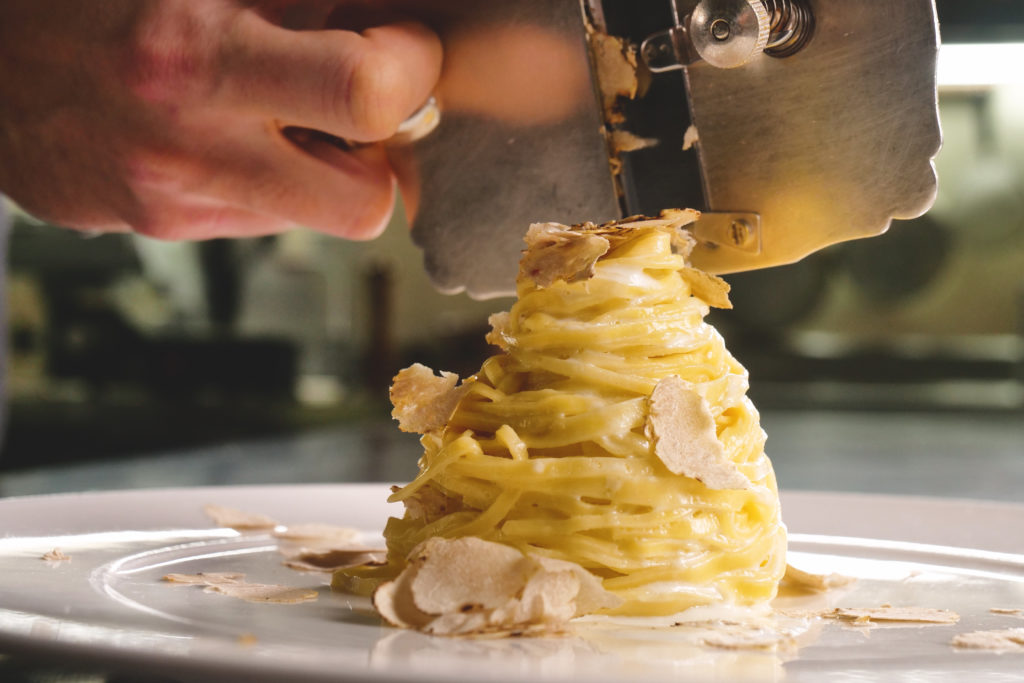Il tartufo
The truffle

COSA E’
WHAT IS IT
Il Tartufo (Tuber) è un fungo spontaneo a forma di tubero, che cresce nel terreno accanto alle radici di alcuni alberi o arbusti, in particolare querce e lecci, dalle quali trae nutrimento. Per tartufo si intende il solo corpo fruttifero ipogeo(che sta sotto terra) che viene individuato con l’aiuto di cani e raccolto a mano. Il tartufo presenta una massa carnosa detta “gleba”, rivestita da una sorta di corteccia chiamata “peridio” e la sua forma dipende dalle caratteristiche del terreno in cui si sviluppa: più il terreno è morbido più il tartufo avrà una forma sferica, al contrario più il terreno sarà duro e pietroso più il tartufo svilupperà una forma bitorzoluta. Costituito in alta percentuale da acqua, fibre e sali minerali, il tartufo è amato ed apprezzato non certo per il suo apporto nutrizionale ma per la sua capacità di apportare piacere al consumatore grazie al sapore unico e inconfondibile.
The Truffle (Tuber) is a spontaneous tuber-shaped mushroom, which grows in the ground next to the roots of some trees or shrubs, in particular oaks and holm oaks, from which it draws nourishment. By truffle we mean the only hypogeal fruiting body (which is underground) which is identified with the help of dogs and picked by hand. The truffle has a fleshy mass called "gleba", covered by a sort of bark called "peridium" and its shape depends on the characteristics of the soil in which it grows: the softer the soil, the more the truffle will have a spherical shape, on the contrary the harder and stony the ground is, the more the truffle will develop a lumpy shape. Made up in a high percentage of water, fiber and mineral salts, the truffle is loved and appreciated certainly not for its nutritional contribution but for its ability to bring pleasure to the consumer thanks to its unique and unmistakable flavor.



